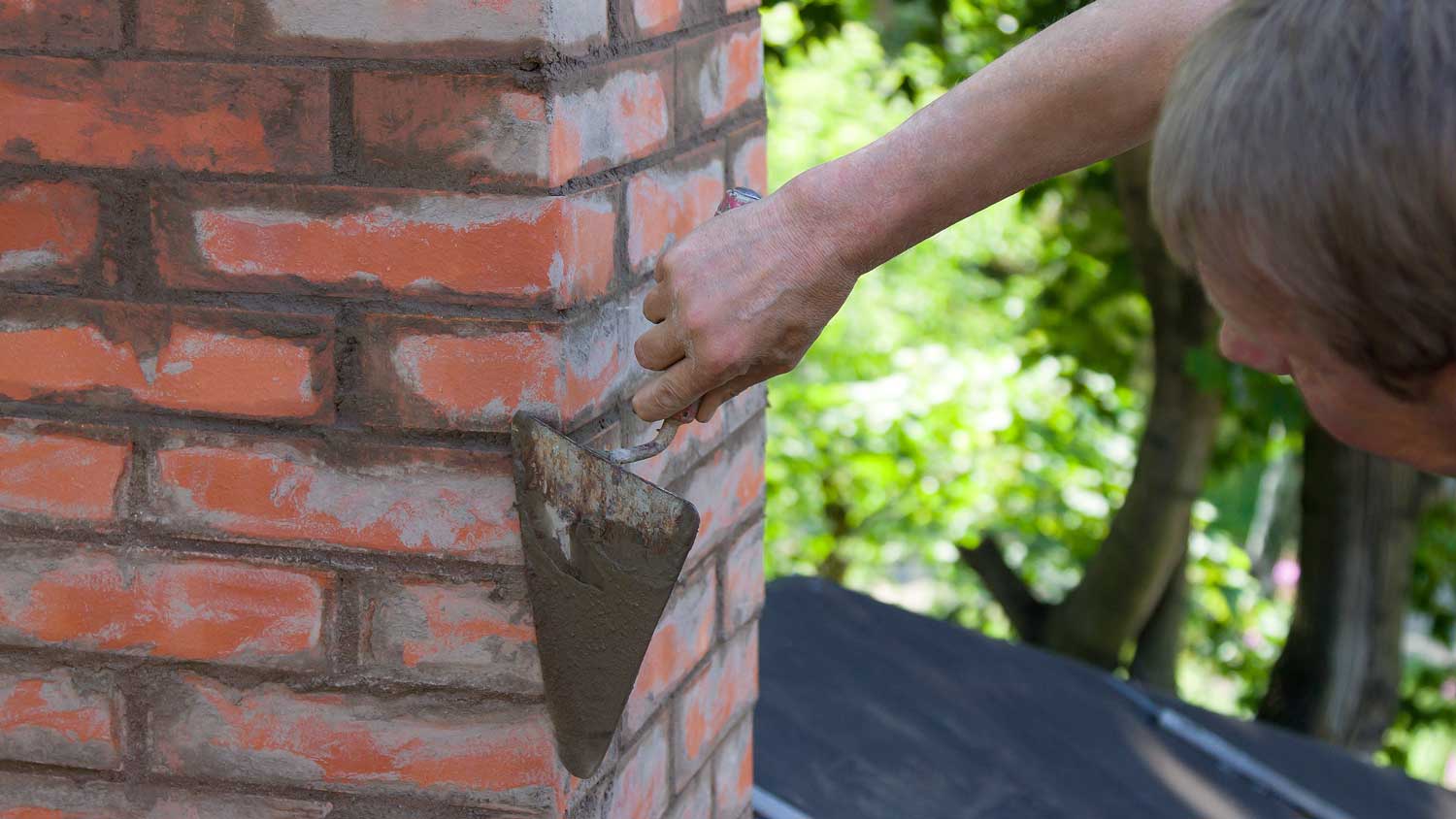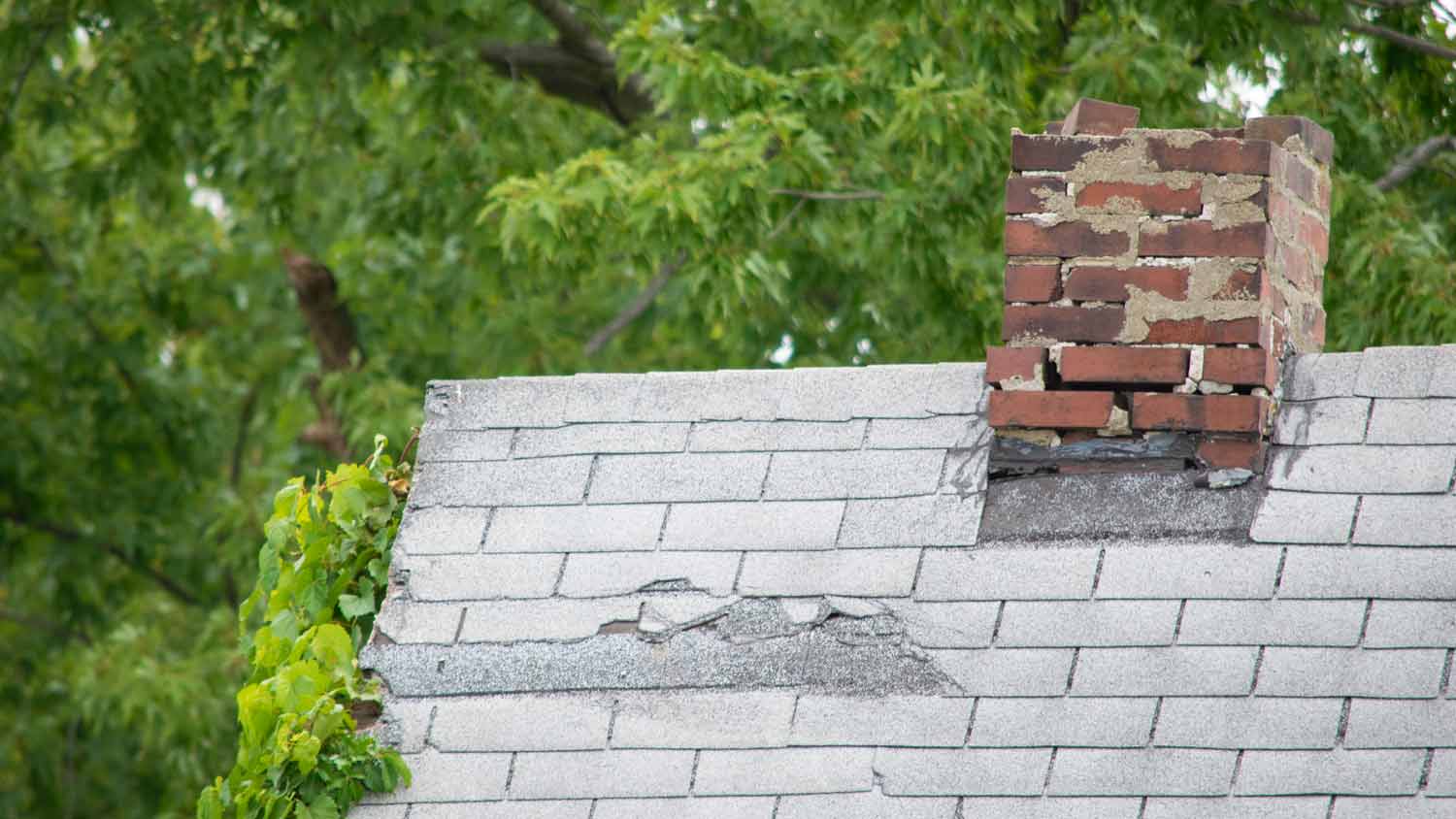Is Your Chimney Leaking Inside the House? Here's What to Do
Stop the problem before it pours trouble


Damage to your chimney crown, flashing, mortar joints, or flue liner can all cause chimney leaks.
Leaking chimneys can cause significant structural damage.
Leaking water causes water stains and mold growth, impacting indoor air quality.
Regular inspections are the best way to prevent a chimney from leaking.
Have you noticed a mysterious leak near your fireplace? Your chimney may be telling you something’s wrong. A chimney leaking inside the house might start small, but if ignored, it can damage your home significantly. Here are the common culprits behind these leaks, how to spot them, and tips for fixing them before they become a costly headache.
1. Cracked or Damaged Chimney Crown

The chimney crown is a metal, mortar, or concrete cap that sits at the top of the chimney. It is a vital component that prevents water from entering. If it's cracked or damaged, water can seep into the chimney. Signs of this include cracks on the crown, damp spots on the walls and ceilings near the fireplace, and even water pooling in the fireplace.
Solutions
Applying a waterproof sealant is a quick fix for minor cracks. Consider having a chimney repair specialist install a new crown if the damage is more extensive.
Signs and Causes
Several issues can arise if you don't fix a cracked or damaged chimney crown.
Significant Water Damage
A damaged chimney crown allows water to seep into the chimney structure. Over time, this moisture can penetrate the masonry, causing it to deteriorate. This can cause spalling, where the bricks flake off, leading to expensive repair or structural collapse.
Water can also seep through the cracks in the crown and trickle down the chimney, damaging walls and ceilings. You may notice water stains, peeling paint, and mold growth negatively impacting your indoor air.
Chimney Liner Deterioration
The chimney liner protects your home from heat and smoke. However, constant exposure to moisture can compromise it.
A damaged liner reduces the efficiency of your chimney and increases the risk of a chimney fire. It can also lead to dangerous gasses, like carbon monoxide, leaking into your home.
Freeze-Thaw Damage
Water entering through cracks in a damaged crown can freeze and expand during winter. When the water later thaws, the cracks can widen, causing significant damage to the surrounding masonry and causing large chunks of the chimney to fall off.
2. Damaged Chimney Flashing
Chimney flashing is a protective shield made from thin metal, usually galvanized steel or copper, that wraps around the area where the chimney meets the roof. Its job is to keep water from leaking into your attic or living spaces.
Detecting damaged flashing is not easy. You can look for gaps where it lays. Also, a leaking chimney usually leaves a fireplace with a foul odor, like mildew. When in doubt, call a local professional.
Solution
Remove the old, damaged flashing around the chimney and replace it with new flashing pieces cut to fit its dimensions. Afterward, seal the edges with roofing sealant to prevent leaks. Hiring a professional is best if you're uncomfortable with heights or working on the roof.
Signs and Causes
In addition to water stains, peeling paint, and possible mold growth on walls and ceilings near the chimney, continuous water infiltration can weaken your roof structure. The wood framing can become saturated, leading to rot and decay.
Water can also enter the attic, soaking insulation. Wet insulation is no longer effective, leading to higher energy bills as your home becomes less energy-efficient. The water can also come into contact with wiring, potentially causing a fire.
3. Worn or Deteriorated Mortar Joints

Worn or deteriorated mortar joints can cause a chimney to leak by allowing water to seep through the gaps in the masonry. Mortar joints are the material between the bricks that hold the chimney together and keep it watertight. Over time, exposure to the elements can cause the mortar to crack, crumble, or wear away, creating pathways for water to seep into the chimney.
Damaged mortar is easy to confirm. Look for signs of damage, like cracking or crumbling mortar and gaps between bricks or bulging. You might also notice water stains or damp patches on the exterior walls near the chimney or on the interior walls around the fireplace. Lastly, a white, powdery substance on the surface of the chimney bricks is a sign of moisture passing through the masonry.
Solutions
If the bricks are not deteriorating, tuckpointing or repointing can boost your chimney's structural integrity.
Signs and Causes
Continuous water infiltration can lead to leaks inside your home, causing damage to ceilings, walls, and other interior structures. It also accelerates the decay of the chimney, making it more vulnerable to further weather damage. Furthermore, damaged mortar can allow heat, smoke, and flammable gasses to escape through the chimney’s walls rather than being correctly vented outside.
4. Leaking Flue Liner
The flue liner, also called a chimney liner, directs smoke and gasses out of the chimney. It is an important feature that protects the chimney's masonry and joints from heat damage, which can prevent house fires.
However, if it is cracked or improperly installed, water can leak into the chimney. Unfortunately, flue liner damage is more challenging to detect without a professional inspection, but you may notice water damage or staining inside the fireplace or stove.
Solution
Repair or replace the flue liner. This task usually requires professional help due to the complexity of accessing and fixing. A new chimney liner costs between $1,500 and $5,000 including installation.
Signs and Causes
If you notice water in the firebox, dampness or staining on your interior walls and ceiling, or musty odors coming from the firebox or attic, these are all clear signs of a damaged flue liner.
Additional indicators are white discoloration on the chimney's external masonry and a damper that won't open or close entirely due to rust.
How to Prevent or Catch Chimney Leaks Early

Annual chimney inspections can catch potential issues before they become serious problems. A local chimney repair specialist is the best professional to work with.
Additionally, homeowners can apply a waterproof sealant to a well-maintained chimney to create a barrier against moisture, reducing future problems. This is particularly important for homes in areas that experience all types of weather.





- How to Tackle the 7 Most Common Chimney Problems
- How to Fix a Leaking Chimney: 7 Common Causes and Their Solutions
- 5 Reasons There’s Water Coming Down Your Chimney in Heavy Rain
- How to Repair a Chimney: A Guide to 5 Common Problems and Their Solutions
- Do Metal Chimney Flues Need Cleaning?
- How to Clean Chimney Brick
- The 6 Best Chimney Caps, Including Pros and Cons
- What Is Chimney Flashing? Explore the Different Materials, Problems, and Cost
- What Is a Chimney Damper and How Is It Used?
- What Is Parging a Chimney? How It’s Done and Why It’s Necessary










